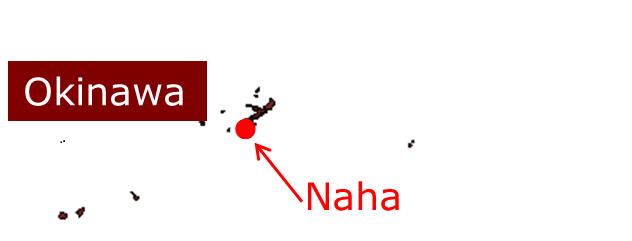
Figure 1 Location of Naha City
Figure 2 Seasonal variation of meteorological elements in Naha City Winter (December-January-February)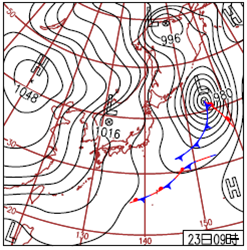
Figure 3 Weather chart for 00UTC on 23 December 2012 In winter (December-January-February), the Siberian High develops over the Eurasian Continent. Northerly winds cause the advection of cold air from the Continent to Okinawa, bringing cloudy or rainy conditions to the area. Okinawa has mild winters due to its location in a subtropical area. Spring (March-April-May)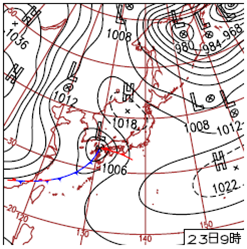
Figure 4 Weather chart for 00UTC on 23 March 2012 In spring (March-April-May), migratory cyclones and anticyclones that alternately move eastward prevail across Japan. Temperature increases (decreases) in front (back) of cyclonic systems due to warm southerly (cold northerly) flow. Temperature in Okinawa rises gradually with large short-term variations. The rainy season, known as the Baiu, begins in early May in Okinawa. Summer (June-July-August)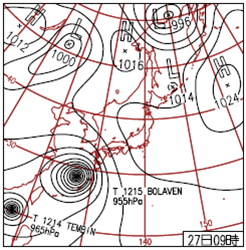
Figure 5 Weather chart for 00UTC on 27 August 2012 Precipitation in the Baiu is caused by a stationary front, called the Baiu front, which forms where a warm maritime tropical air mass meets a cool polar maritime air mass. The Baiu begins in early May and ends in late June in Okinawa. In the second half of summer, the North Pacific High extends northwestward around Japan, bringing hot, humid, and sunny conditions to Okinawa. Okinawa rarely experiences temperatures of 35°C or above because it has an oceanic climate. The number of tropical storms approaching Okinawa peaks in August. Autumn (September-October-November)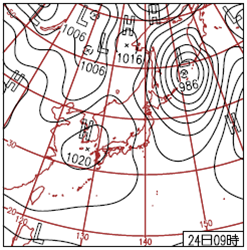
Figure 6 Weather chart for 00UTC on 24 October 2012 In autumn (September-October-November), temperatures fall gradually. The autumnal rain front and tropical cyclones affect autumn weather. In October, the frequent passage of anticyclonic systems brings sunny conditions and refreshing air to Okinawa. The number of cloudy or rainy days with southward cold flow tends to increase in November. |